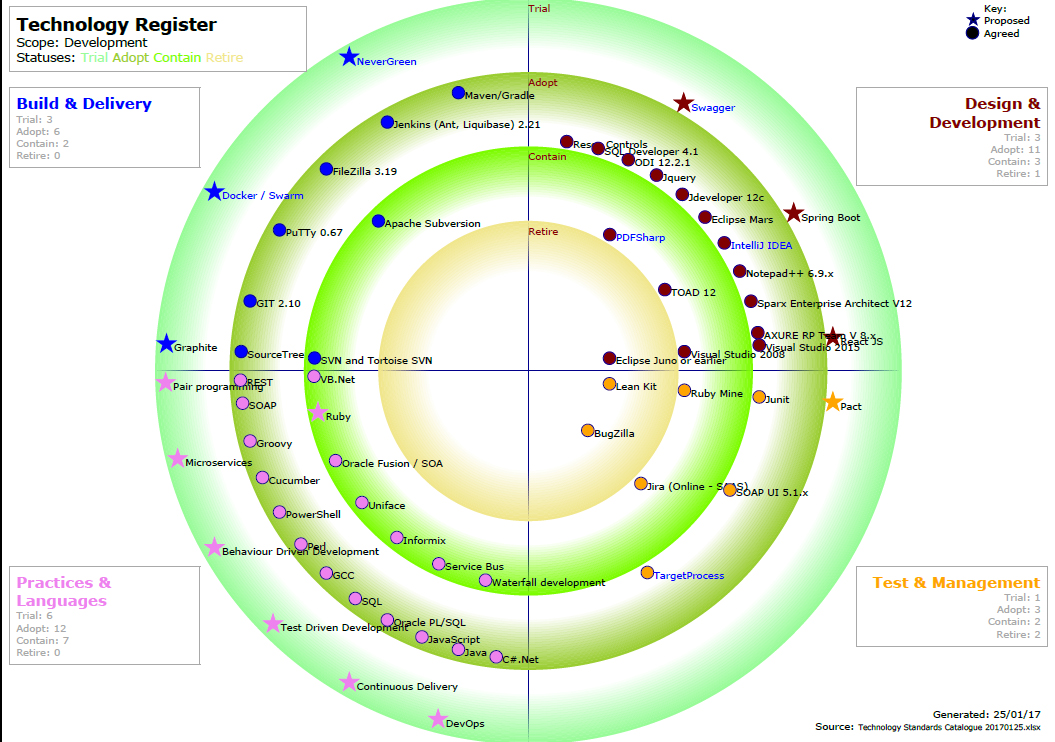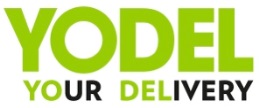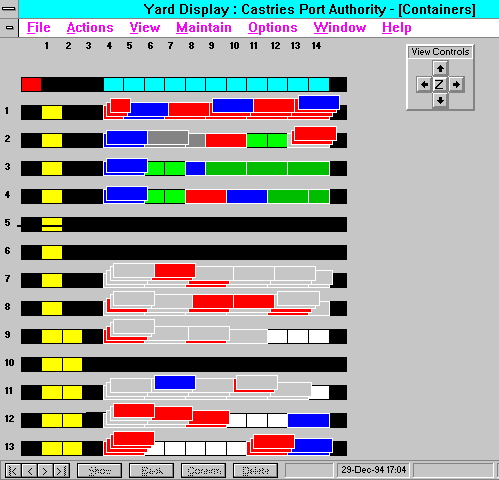TechRadar: EA Technology Visualisation

Summary: Provides the ability to generate multiple high-quality visualisations of the enterprise technology landscape from a single underlying source
TechRadar enables Enterprise Architects to maintain a single, simple, version-controlled spreadsheet (or simple database) with a very "flat" presentation of the data, and TechRadar can then generate a multi-page PDF with visualisations of the data, in both "Radar" and tabular formats.Yodel Identity Management

Summary: Complete, working design for a federated identity management system integrating Active Directory and OpenLDAP
A federated solution for identity management combining Active Directory and OpenLDAP, supporting a complex role structure, and fully integrated with existing on-boarding and off-boarding processes. I created a fully worked-up design with a test system and documented code required to perform key actions.Insurance Premium Breakdown
The Challenge: Explain in simple graphical form the various factors affecting a year on year insurance premium change, with the objective of reducing call centre complaints.
I originated the concept of a simple graphical web page showing an analysis of the premium change, and in a few days created a working prototype website with two different graphical representations plus drill-down to more detailed information.Network Automation and Orchestration
Summary: Development of network orchestration and automation solutions
UBS' New Generation Networks programme aims to simplify management of their highly complex internal network using extensive automation and orchestration. Early work consisted of fragmented point solutions. I created a cohesive solution architecture, with unified request handling, standardised data structures, and adapters to multiple endpoint interactions. I then developed this architecture’s first use for DNS management, using Python/Django, REST APIs and Cisco NSO (Tail-F), among others.Knowledge Base Development

Summary: Development of a prototype knowledge base supporting automotive fault-finding
The ID Workshop solution provides comprehensive vehicle diagnostics, but provides little or no guidance on how to efficiently identify and rectify the underlying causes of a problem. I developed a companion system which bridges that gap, synthesising information from a number of external sources to help mechanics identify parts recommendations which can then become queries in a parts catalogue.Agile Shelf-Edge Ticketing Platform
The Challenge: Meet a regulatory deadline for a change in shelf-edge ticketing, against considerable, potentially incompatible constraints
The requirement was to deliver a new capability for in-store shelf-edge ticketing, at the time of a major change freeze. Despite timescale, platform and team capability challenges I quickly delivered a new solution to meet the deadline. The solution evolved progressively over several years, delivering significant business benefit for a very low investment.Rule-based message transformation
The Challenge: Replace a large number of complex, hand-coded transformations between two core message models with a single generic rule-based solution.
I developed a rule-based "transformation engine" which transforms between the two models, doing away with a very large number of complex hand-coded transformations.Integration Message Comparison
The Challenge: Identify the nature of changes to key assets from messages providing just the latest information for each asset
I developed a component for National Grid’s EAI architecture which compares and enriches related XML messages as they flow through the system, enabling better downstream routing depending on what has changed.TestIDMS - DMS Load Testing
The Challenge: Demonstrate performance and reliability of a problematic complex application, without investment in a high-end test toolset
TestIDMS was a simple performance test tool built using .NET and Internet explorer able to drive complex workflows through to completion, able to simulate multiple sessions from a single low-specification user PC.Android Private File Manager
The Challenge: Manage related content securely within a single Android app
Stash-It! is an "all in one" private file manager, tabbed browser and downloader for Android, designed to keep content safe from prying eyes, but with multiple content types co-located, e.g. for a client or project.ConQuest: Graphical Container Yard

The Challenge: Demonstrate, in the mid 1990s, how graphical user interfaces could make a real difference to the management of container shipping
ConQuest is a prototype visual container control and planning system for Microsoft Windows. It enables all users, from the gate operators to the planners, to do their work in real time, using intuitive visual displays, which give a clear picture of the yard.RelQuest: Fault Tree Modelling

The Challenge: Enable simple qualitative and quantitative modelling of complex system failure probabilities with a simple toolset based on Visio.
RelQuest is a tool to support Fault Tree Analysis of hardware and software system reliability. It is based on a simplified modelling approach, which allows analytical (and therefore almost instantaneous) evaluation of the model. It supports base events, AND, OR and VOTE gates.



 Thoughts on the World (Main Feed)
Thoughts on the World (Main Feed) Main feed (direct XML)
Main feed (direct XML)